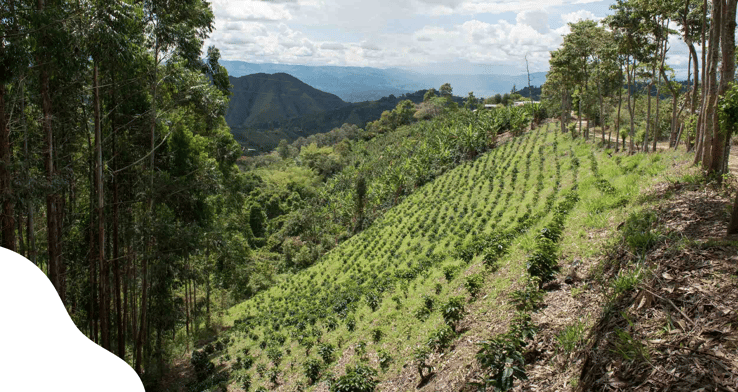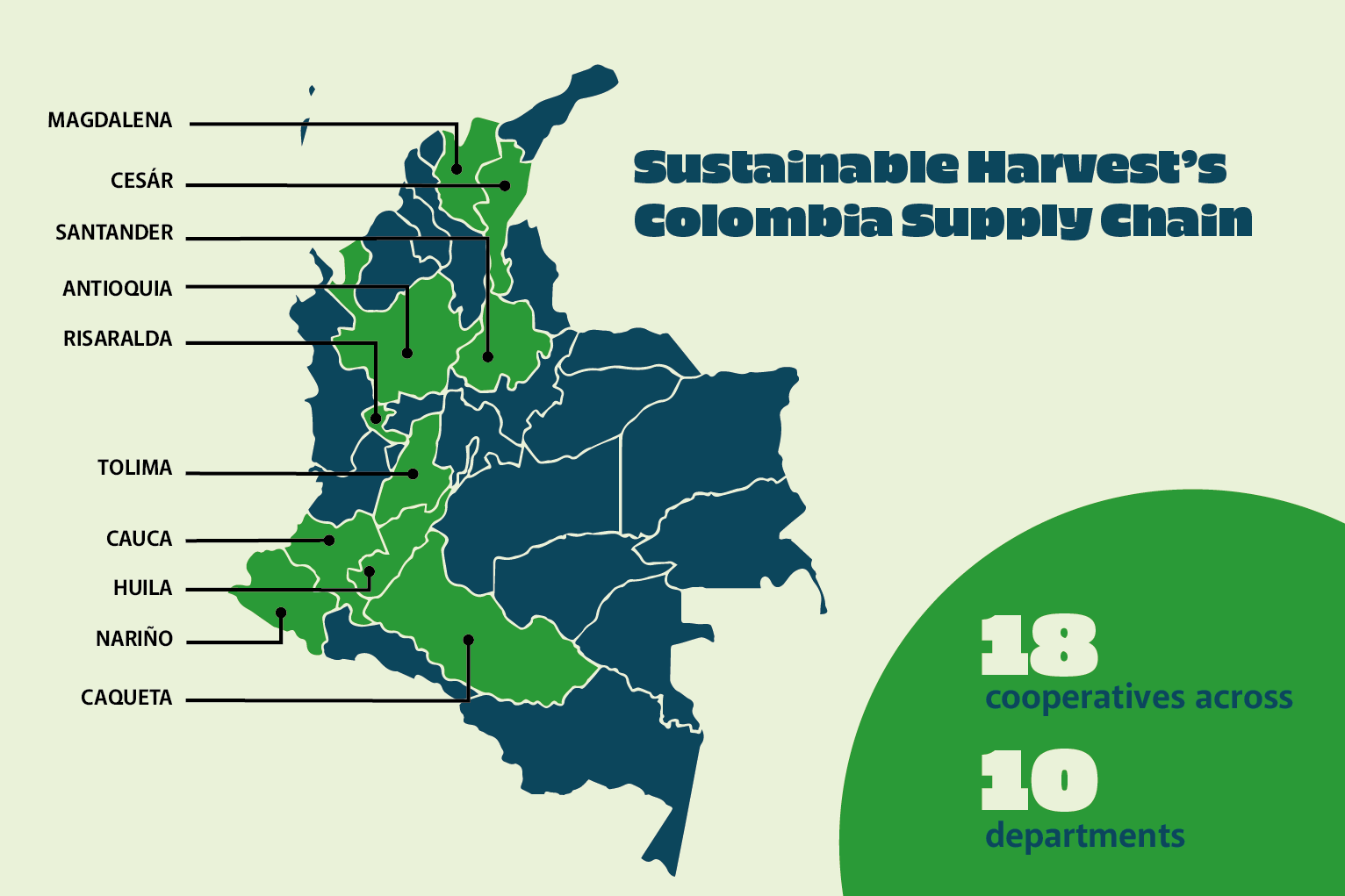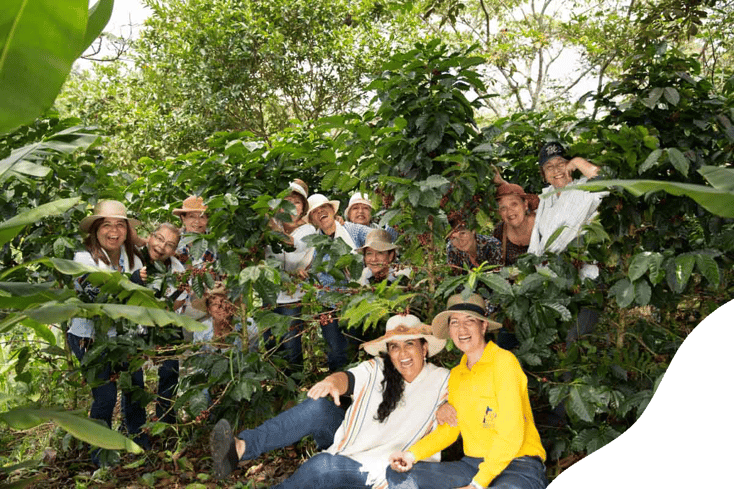
There are few coffee growing countries more iconic than Colombia. Colombia produces the most Arabica coffee out of any country in the world and ranks third in terms of total coffee production behind Brazil and Vietnam. For decades, coffee consumers—and roasters—worldwide have made Colombian coffee their go-to. Think coffee, and you think Colombia.
Coffee has a long, storied history in Colombia. Produced in 22 of Colombia’s 32 departments, coffee is one of the most crucial pillars of the national economy. As the global coffee industry continues to shift and evolve at ever faster rates, a key focus for Colombian producers has been continually adapting to new trends in order for producers to access new markets.

Indeed, this adaptability is one of the reasons why Colombia has continued to remain at the forefront of the coffee industry—even during uncertain times. Colombian cooperatives were the first we knew of to adapt their harvesting strategies to the pandemic to minimize losses, and it paid off: in 2020, Colombia was still able to produce 14 million bags in spite of the challenges (for reference, Colombia produced a record 14.8 million bags the year before). Adaptability and resilience go hand in hand.
To learn more about where Colombia is now, how the industry is changing there, and what buyers and roasters should look forward to, we had a chat with Claudia Rocio Gomez, our Coffee Quality Manager in Colombia, and with Mark Inman, our Director of Growth.
________________________________________________
The Colombian coffee landscape today is almost a totally different origin compared to the Colombia of the early 2000’s, according to Claudia and Mark. Over the past two decades, the Colombian coffee industry has progressed tremendously, and much of this change comes as a result of intense efforts to diversify and differentiate the sector to encourage innovation. From local competitions showcasing unique, high-quality regional coffees to an ever growing drive to experiment with new and different processing methods, to the encouragement of more women and youth entrepreneurs, producers throughout Colombia have continued to find creative ways to meet changing demands.

Producers from Risaralda
In a few of our earlier blogposts, we noted that there’s been a rise in consumer interest in both impact-driven coffees as well as interest in coffees that deviate from the norm—think more unusual processing methods and exotic, less common varieties. If you haven’t yet, we recommend giving our Sourcing Tips for 2021 a read which goes in depth into these topics, as well as our updates on Ecuador and Peru to learn more!
In many ways, Colombia has been a driving force for the increased interest that we’re now seeing in these types of coffees. Claudia explained that Colombia has paid close attention to buying trends in the last decade—perhaps more so than other countries—and cooperatives have been proactive at involving more youth in coffee production, creating more women’s groups, acquiring certifications, and investing in farm renovations and better practices.
“Something I’ve always found fascinating about Colombia are the strong differences across the numerous growing regions. Very few origins in the world offer such an array of flavors, processing methods, and cultivars."
-Mark Inman
“For the past decade, Colombia has had a strong focus on clients’ needs,” says Claudia. Overall coffee quality as a result has steadily increased year after year, which has only further cemented Colombia’s global reputation among roasters as a solid, dependable origin. This stability has provided the capacity for cooperatives to quickly adapt to new trends, experiment and innovate in search of more diverse cup profiles.
%20(1).png?width=734&name=Proceso1%20(1)%20(1).png)
Today, a wide range of processing methods are more and more commonplace, from naturals and honeys, to even yeast-fermented and anaerobic-processed coffees. Colombian producers have become exceptionally adept at coffee processing—it’s no wonder that roasters have taken notice!
New Regions on the Rise
For Mark, it seems that Colombia’s next frontier lies in exploring and promoting Colombia’s lesser known growing regions. In just the past couple of years, we’ve seen fantastic emerging regions producing quality coffees on par with some of Colombia’s most well-established regions, yet with strikingly different profiles. Mark isn’t surprised, however.
“Something I’ve always found fascinating about Colombia are the strong differences across the numerous growing regions. Very few origins in the world offer such an array of flavors, processing methods, and cultivars," he says. Claudia echoes this sentiment. “You can find coffees from Sierra Nevada that are chocolatey with good body, great sweetness, and a subtle acidity, but you can also find coffees with berry and caramel notes, especially in the south of the country."
%20(1).png?width=734&name=Patiero%20(1)%20(1).png)
Patio drying at Grupo Café Forestal in Santander
One emerging region that Mark noted is Santander. "I’ve always been impressed by coffees from Santander. I love the rich, chocolatey cups with dark red fruit that’s a hallmark of this region. They also blend so well with a bright Nariño, Tolima or Huila.” Mark also mentioned that Santander is a great option for roasters seeking organic coffees, as the region has a large amount of organic production with lots of interesting options.
"Claudia explained that Colombia has paid close attention to buying trends in the last decade—perhaps more so than other countries—and cooperatives have been proactive at involving more youth in coffee production, creating more women’s groups, acquiring certifications, and investing in farm renovations and better practices."
One of the most important regions for Claudia is Tolima in the center-west, Andean region of Colombia, an area known for its unparalleled biodiversity and rich, fertile soil. For years, the region has been impacted by heavy political conflict, making coffee-growing in Tolima difficult and dangerous. Now, with conflict subsiding and initiatives to support coffee production being implemented, more coffee growing families are returning to the region to reestablish farms. Claudia also mentioned that coffee growers in the region tend to be younger than most farmers in Colombia, at an average of 48 years old in Tolima versus the national average of 56. While not “young” necessarily, this does mean that coffee production in Tolima could be less affected by generational crises than other regions in the years to come.
%20(1).png?width=731&name=Image%20from%20iOS%20(12)%20(1).png)
Milling at La Cristalina in Risaralda
Claudia also highlighted Risaralda as another exciting region that roasters should keep their eye on. Although Risaralda has long been an established growing region in Colombia—and is one of the regions in Colombia’s “Coffee Triangle”, the others being Tolima, Quindío and Caldas—much of Risaralda’s coffee was slated for the soluble coffee industry. It’s only been in the past few years that Risaralda has popped up on the specialty radar—and it’s definitely not a region to miss. Coffee farmers in Risaralda have been keen on trying different varieties, rapidly improving their practices and as a result, coffee quality has leapt to new heights.
________________________________________________
It feels as though we’ve only begun to scratch the surface when it comes to new and exciting coffees to come from Colombia. There are some regions that we still know very little about when it comes to coffee, such as Caquetá in the Amazonas region, where cooperatives work in the border with Huila. Claudia has been able to sample coffees from this region, and initial impressions are promising despite the coffees being grown at low elevation, which is unusual. While acidity might be less intense, other characteristics, such as clarity, a soft, silky body, and lingering sweetness, make it clear that there’s great coffee to be found.
If you want to try something new from Colombia this year, you’re in luck! This year actually marks the first year that we’re bringing in coffee from Grupo Café Forestal in Santander, making it a brand new origin offering for us! Mark was totally blown away by this coffee with its ripe, stonefruit notes of peach combined with sugary mandarin and dulce de leche, and knew straight away that this was a coffee we needed to offer. You can learn more about Forestal here. Be sure to sign up to be notified when this coffee is available!
For something that’s currently available, checkout La Cristalina from Risaralda! This cooperative has worked hard to become a leading cooperative in Risaralda—and it shows in their Guática Especial lot, which is comprised of the best that La Cristalina has to offer. You can learn more about this coffee here.



.png)
